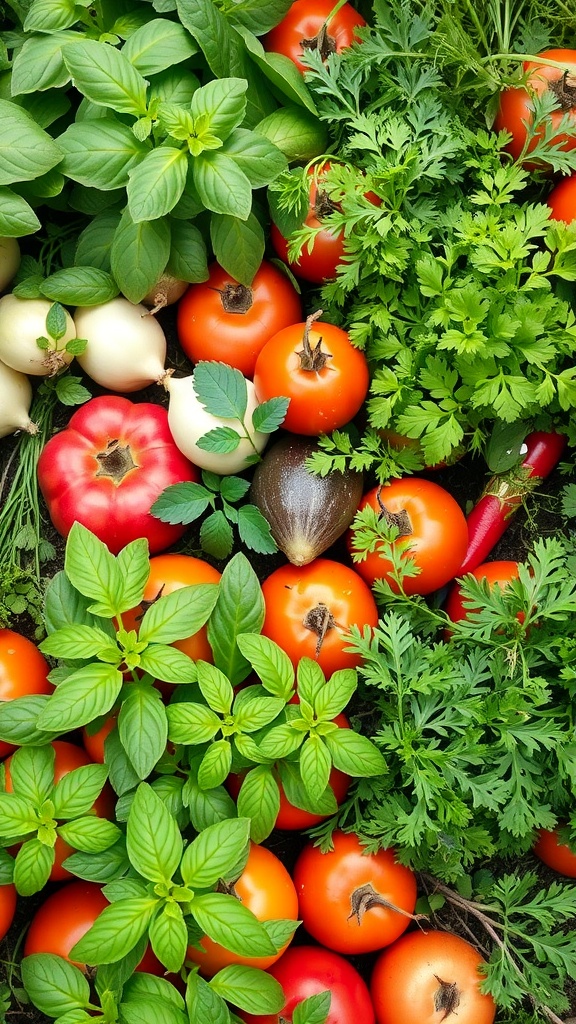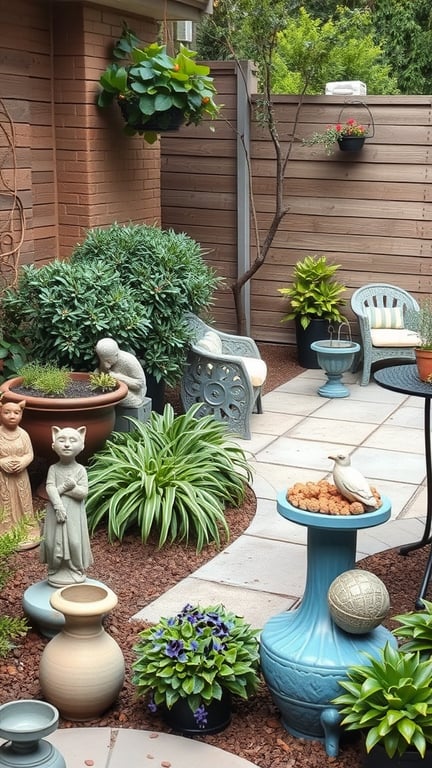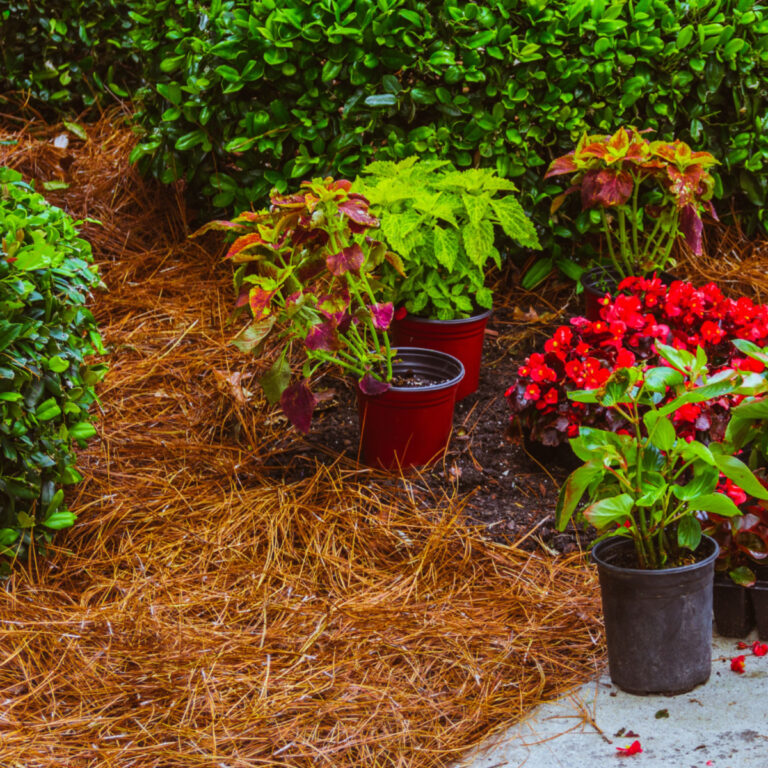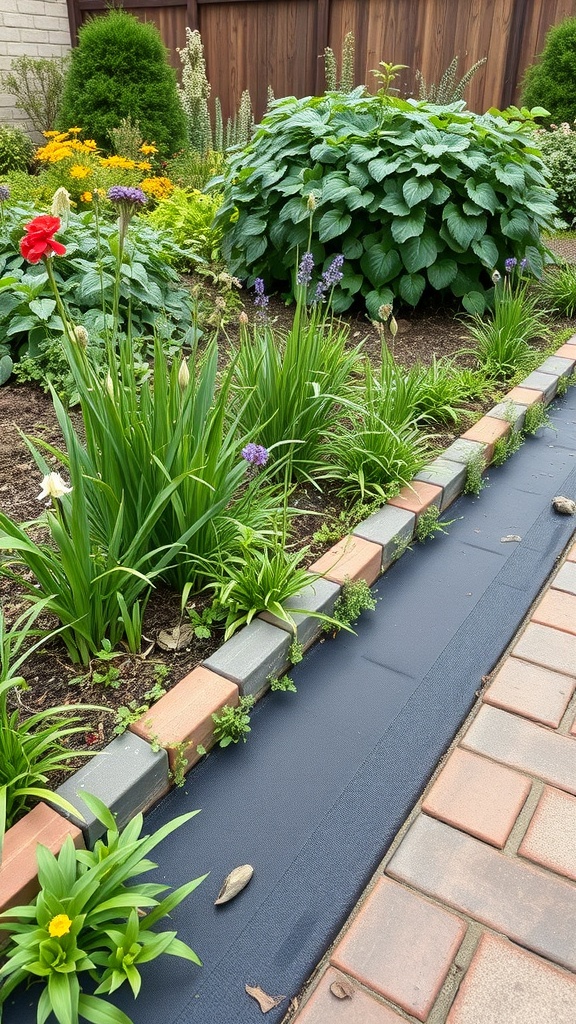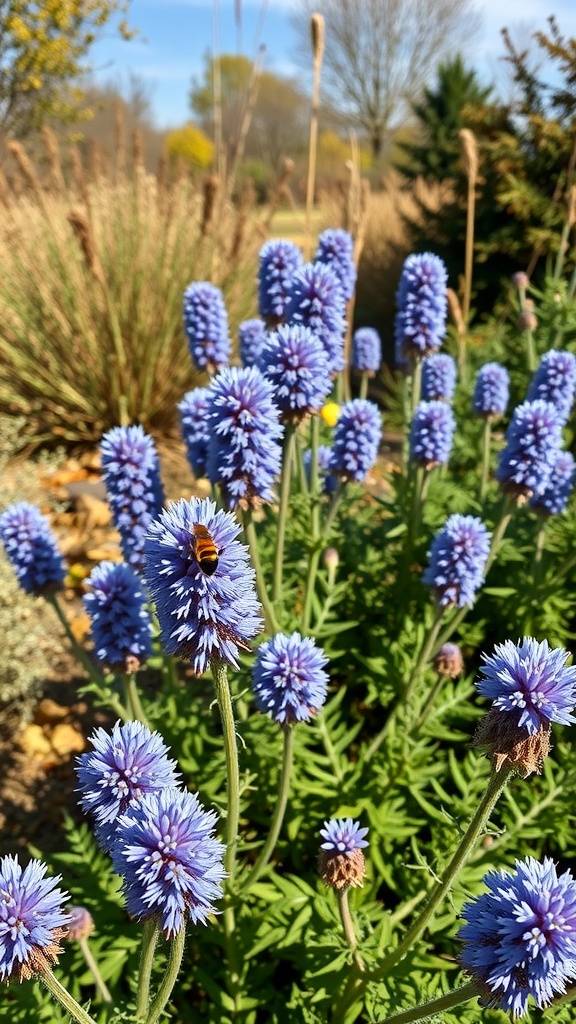15+ Creative No Mow Lawn Ideas for a Beautiful Backyard
If you’re looking to ditch traditional lawns without sacrificing style, you’re in the right spot! Here are 19+ inventive no-mow lawn ideas that will keep your outdoor space beautiful while saving time and effort. Whether you prefer low-maintenance ground covers, wildflower patches, or unique landscaping options, there’s plenty to inspire your next outdoor project.
Meadow Gardens
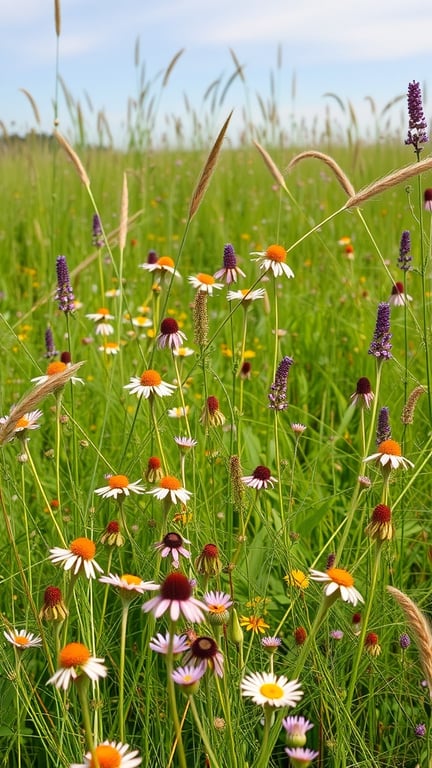
Meadow gardens are a fantastic way to create a natural, low-maintenance landscape. Imagine a vibrant space filled with wildflowers and grasses swaying in the breeze. This image captures the essence of a meadow garden, showcasing a mix of colorful blooms and lush greenery.
These gardens not only look beautiful but also support local wildlife. Pollinators like bees and butterflies thrive in such environments. By planting native species, you can attract these helpful creatures while minimizing the need for chemical fertilizers and pesticides.
Creating a meadow garden is simple. Start by selecting a variety of native wildflowers and grasses that suit your climate. Scatter the seeds across your chosen area and let nature do its thing. Over time, you’ll see a stunning display of colors and textures.
Meadow gardens also provide a peaceful retreat. They invite you to relax and enjoy the beauty of nature right in your backyard. Whether you want a space for meditation or a spot for family gatherings, a meadow garden can be the perfect solution.
Ornamental Grasses
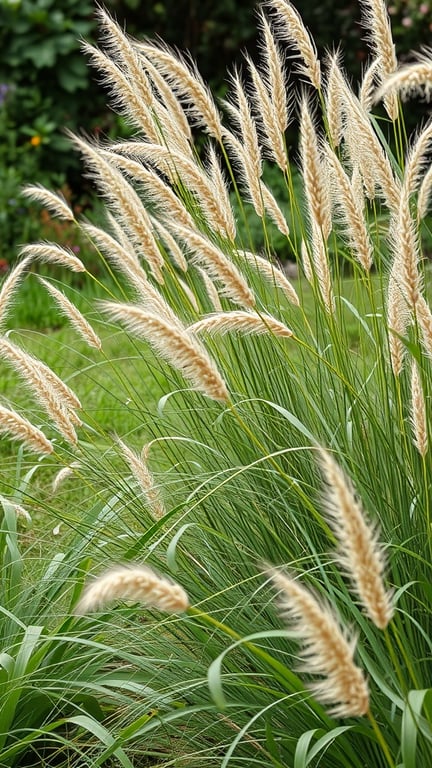
Ornamental grasses are a fantastic choice for a no-mow lawn. They add texture and movement to your garden, creating a lively atmosphere. The image shows beautiful tall grasses with fluffy seed heads swaying gently in the breeze. These grasses can thrive in various conditions, making them versatile for different landscapes.
One popular option is Pampas grass, known for its striking plumes. It can grow quite tall, providing a dramatic focal point. Other varieties, like Blue Fescue, offer a more compact look with their blue-green foliage. Mixing different types can create a stunning visual effect.
These grasses require minimal maintenance. Once established, they need little water and no mowing. This makes them perfect for busy gardeners or those looking to reduce their yard work. Plus, they attract beneficial wildlife, like butterflies and birds, enhancing your garden’s ecosystem.
Rock Gardens
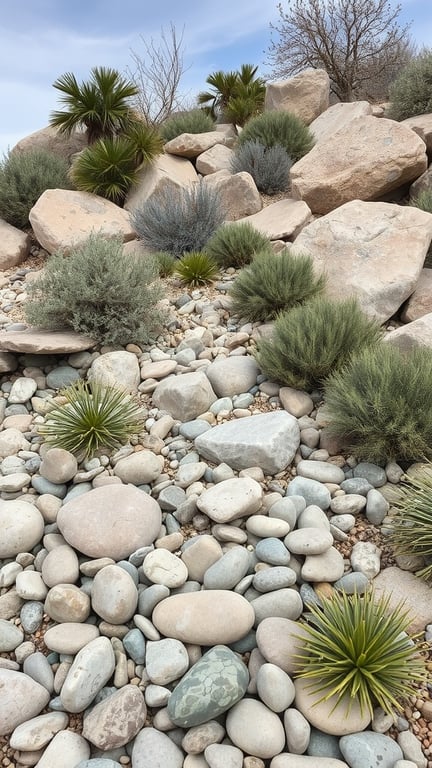
Rock gardens are a fantastic way to create a low-maintenance landscape. They combine stones and plants to form a natural look that requires little upkeep. The image shows a beautiful arrangement of rocks and various plants, showcasing how these elements can work together harmoniously.
Using different sizes and shapes of stones adds texture and interest. The plants, like the spiky ones in the foreground, thrive in rocky environments and need less water. This makes rock gardens perfect for those looking to reduce lawn care.
Not only do rock gardens look great, but they also provide habitats for local wildlife. Birds and insects are often attracted to these spaces, adding life to your yard. Plus, they can be designed to fit any space, whether large or small.
So, if you want a stunning garden that doesn’t require mowing, consider creating a rock garden. It’s a simple yet effective way to enhance your outdoor space while enjoying nature.
Ground Cover Options
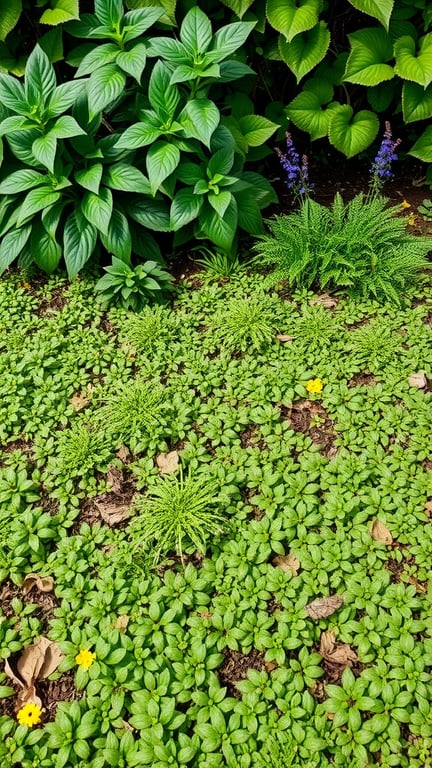
Ground cover plants are a fantastic way to create a lush, green space without the hassle of mowing. The image shows a vibrant mix of ground cover plants, showcasing their potential to fill in bare spots and add texture to your garden.
These plants, like the ones in the photo, can thrive in various conditions, making them perfect for different areas of your yard. They often require less water and maintenance than traditional lawns, which is a big plus for busy gardeners.
Some popular choices include creeping thyme, clover, and sedum. Each of these options brings unique colors and textures, enhancing the visual appeal of your landscape. Plus, they can help prevent weeds from taking over, making your gardening efforts more effective.
Incorporating ground cover plants not only beautifies your space but also supports local wildlife. Many of these plants attract pollinators, adding life to your garden. So, if you’re looking to reduce lawn care while still enjoying a beautiful yard, ground cover options are definitely worth considering!
Clover Lawns
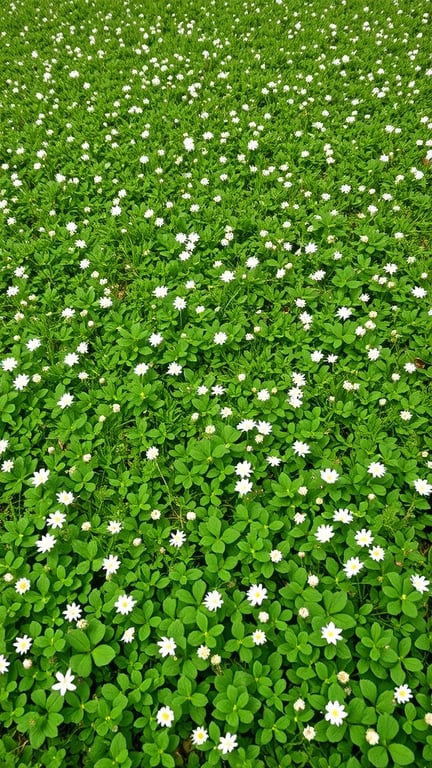
Clover lawns are a fantastic option for those looking to reduce lawn maintenance. The image shows a lush green carpet of clover dotted with small white flowers. This vibrant look is not just pretty; it offers many benefits.
Clover is a hardy plant that requires less water than traditional grass. It grows well in various soil types and can thrive in both sunny and partially shaded areas. This makes it a versatile choice for many gardens.
Another perk of clover is its ability to fix nitrogen in the soil. This means it can help improve soil health without the need for chemical fertilizers. Plus, clover lawns attract beneficial insects like bees, making your garden a friendlier place for pollinators.
For those who enjoy a softer lawn, clover provides a cushiony feel underfoot. It’s also resistant to many pests and diseases, which means less worry for you. If you’re tired of mowing every week, a clover lawn might just be the perfect solution.
Edible Landscaping
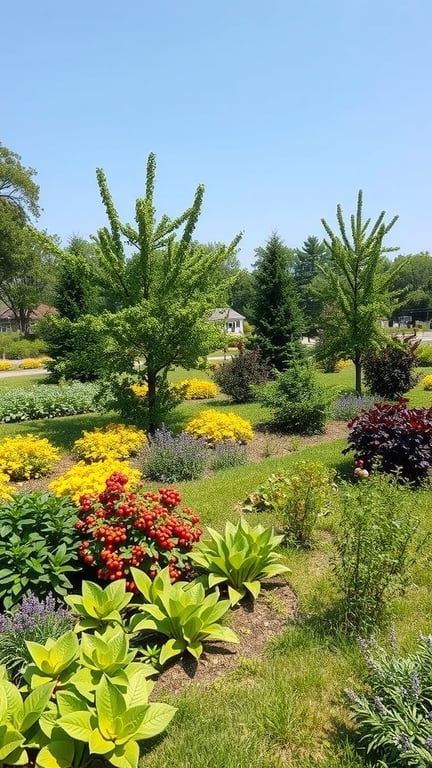
Edible landscaping is a fun way to combine beauty and practicality in your yard. Imagine a garden where every plant serves a purpose, not just for looks but also for your kitchen. The image shows a vibrant garden filled with colorful flowers and lush greenery, which can easily incorporate edible plants.
In this garden, you can spot various plants that not only add color but can also be harvested. For example, the bright red clusters could be tomatoes or berries, while the leafy greens might be kale or Swiss chard. These plants not only beautify your space but also provide fresh ingredients for your meals.
When planning your edible landscape, think about how to mix ornamental plants with vegetables and herbs. This approach creates a visually appealing environment while ensuring you have easy access to fresh produce. You can plant herbs like basil or rosemary alongside flowers for a fragrant garden that looks great and tastes even better.
Incorporating edible plants into your landscaping can also attract beneficial insects, like bees and butterflies, which help pollinate your garden. So, not only do you get to enjoy the beauty of your yard, but you also contribute to a healthier ecosystem.
Mulched Areas
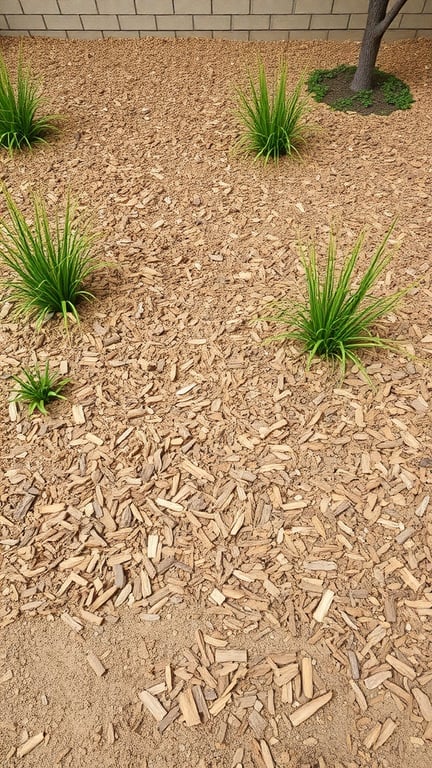
Mulched areas are a fantastic way to create a low-maintenance landscape. In the image, you can see a beautiful arrangement of mulch surrounding some vibrant green plants. This setup not only looks great but also serves practical purposes.
Using mulch helps retain moisture in the soil, which is essential for the plants’ health. It also suppresses weeds, making it easier to maintain the area without constant mowing or weeding. The natural color of the mulch adds warmth and texture to the garden.
Incorporating different types of mulch, like wood chips or bark, can enhance the visual appeal. You can mix in some stones or gravel for added contrast. This design is perfect for anyone looking to reduce lawn care while still enjoying a lovely outdoor space.
Native Plant Landscapes
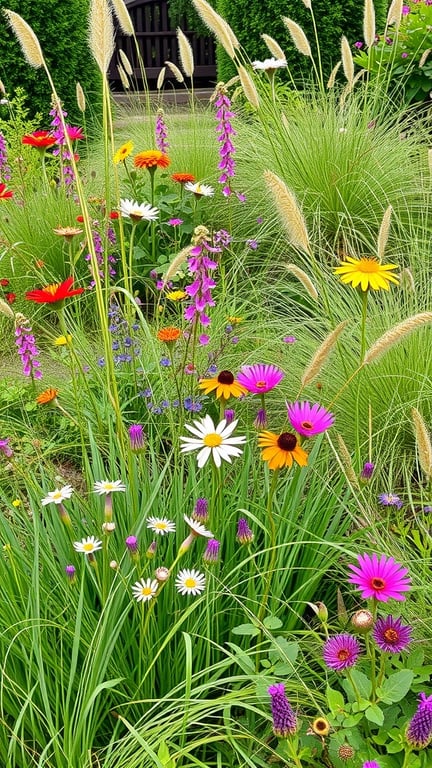
Native plant landscapes are a fantastic way to create a beautiful garden that requires minimal maintenance. The image shows a vibrant mix of native flowers and grasses, showcasing a lively palette of colors. This kind of landscape not only looks great but also supports local wildlife.
Using native plants means you’re choosing species that are well-adapted to your local climate and soil. This reduces the need for extra watering and fertilizers. The flowers in the image, like daisies and coneflowers, attract pollinators such as bees and butterflies, making your garden a lively spot.
Another perk of native plant landscapes is their ability to thrive without much intervention. They can handle local pests and diseases better than non-native varieties. This means less time spent worrying about your garden and more time enjoying it!
Plus, native plants often have deep roots that help with soil erosion and improve water retention. This is a win-win for both your garden and the environment. So, if you’re thinking about a no-mow lawn, consider transforming your space with native plants. It’s a simple way to make a big impact!
Biodiversity-Friendly Spaces
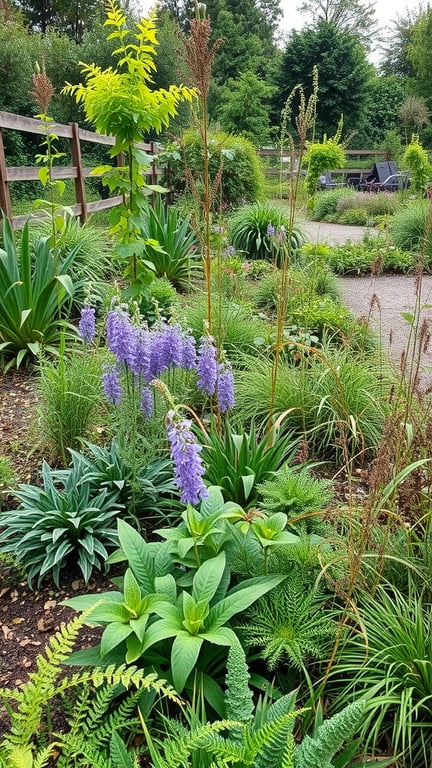
Creating a biodiversity-friendly space in your yard is a fantastic way to support local wildlife. The image shows a lush garden filled with various plants, showcasing how diverse plant life can thrive together. This kind of environment attracts pollinators, birds, and beneficial insects, making your garden a lively ecosystem.
In the picture, you can see vibrant purple flowers and lush green foliage. These plants not only add beauty but also provide essential habitats for various creatures. By choosing native plants, you can create a space that requires less maintenance and supports local biodiversity.
Consider incorporating different layers of plants, from tall grasses to low ground cover. This layering mimics natural habitats and offers shelter and food for wildlife. A no-mow lawn can be a great addition, allowing wildflowers to bloom and encouraging a variety of species to visit.
Overall, a biodiversity-friendly garden is not just visually appealing; it plays a crucial role in preserving nature. So, why not transform your outdoor space into a thriving habitat?
Perennial Flower Beds
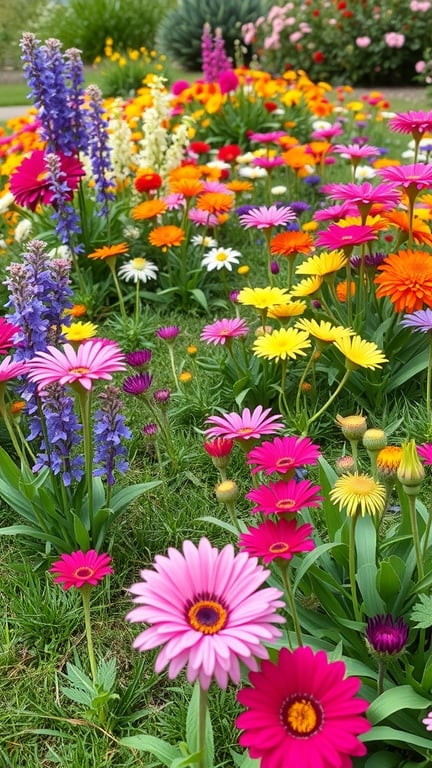
Perennial flower beds are a fantastic way to add color and life to your garden without the hassle of constant upkeep. The image showcases a vibrant array of flowers, including daisies, gerberas, and delphiniums, all in full bloom. These flowers not only brighten up the space but also attract pollinators, making your garden a lively spot.
Choosing perennials means you can enjoy beautiful blooms year after year. They come back stronger each season, providing a reliable source of color. You can mix different varieties to create a stunning visual effect. The combination of pinks, yellows, and purples in the image highlights how diverse and cheerful a perennial flower bed can be.
When planning your flower bed, think about the height and spread of each plant. Taller flowers like delphiniums can serve as a backdrop, while shorter ones like daisies can fill in the front. This layering creates depth and interest in your garden. Plus, with the right selection, you can have flowers blooming from spring through fall, ensuring your garden looks great all year long.
